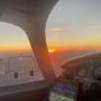Full RPM for McCauley prop on M20C?
-
Members Online
- eman1200
- Scooter
- NickM20F
- KLRDMD
- Flyler
- Mooney in Oz
- flyboy0681
- Yetti
- 1967 427
- thomas1142
- Crawfish
- Greg_D
- toto
- Slick Nick
- jetdriven
- 1980Mooney
- redbaron1982
- Sailorsmuse1
- TravelingIA98
- ajudson
- Utah20Gflyer
- ad5ut
- Ragsf15e
- mluvara
- Ron McBride
- N201MKTurbo
- Robert C.
- hammdo
- atpdave
- jrwilson
- 4cornerflyer
- Jackk
- gabez
- 201Mooniac
- Andy95W
- Matthew P
- Lincoln
- Steve Hughes


Recommended Posts